Miriam Garcia let’s us in on the secrets to making perfect Spanish Easter Torrijas, the Iberian answer to French Toast.
All relevant religious holidays in Spain have a reflection in the food. Spain was a strictly Catholic country for centuries with the liturgical periods tightly marking the habits, and with food rules that had to be obeyed. Though nowadays the religious rules regarding food, like fasting during Easter, are largely overlooked, funnily enough the food traditions remain and making torrijas at home for the Easter celebration, usually a labor holiday lasting four days, is one of them. Also you can find them in pastry shops, restaurants and bars all over the country during this feasting period. Torrijas are apparently a rather ancient recipe, as they first appear quoted by a Spanish author in the 15th Century. Now… listen to yours truly pronouncing this funny word here.
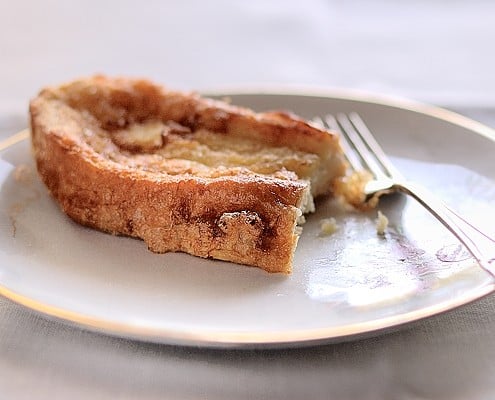
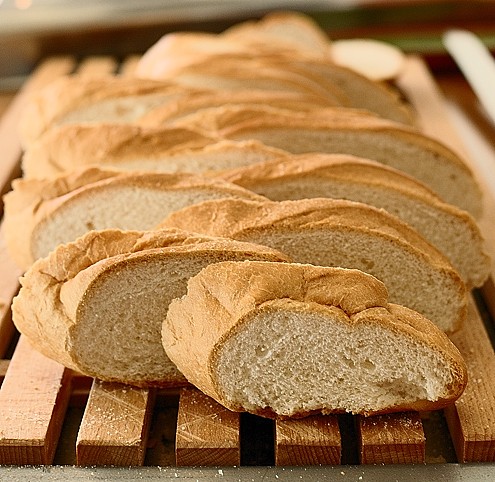
Torrijas are a very simple dish, quite similar to French toast and pain perdu, most often made by soaking slices of stale bread in sweetened milk, also flavoured with cinnamon or vanilla, then bathed in beaten egg, fried in oil and sprinkled with a mixture of sugar and powdered cinnamon. In fact, another one of the many ways developed by the not so well-off to use up bread leftovers. Though today bread especially baked for the purpose of making torrijas can be bought. As it usually happens with most traditional dishes, the perfect ingredients and method are controversial matters, torrijas made with sweet wine instead of milk and others bathed in syrup after frying being also popular. But of course, the best torrijas are always one’s mother’s, no discussion about it…
Print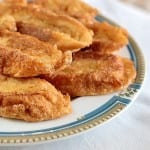
Torrijas, Spanish (not-French) toasts
- Total Time: 2 hours
- Yield: 16 units 1x
Description
Torrijas, traditional Easter fare in Spain, are a Spanish version of French toast or pain perdu
Ingredients
- 1 bread loaf (with tight crumb, no baguettes here) bought the day before and let go stale
- 4 cups (1 liter) whole milk
- 3 tbsp sugar (or honey if you prefer)
- 1 stick cinnamon
- 3–4 eggs
- Sunflower oil or other insipid oil for frying
- Sugar and cinnamon for sprinkling
Instructions
- Cut the bread into 1 inch (2.5cm) slightly diagonal slices. Arrange them on a shallow dish that can hold the milk.
- Put all the milk in a saucepan with the sugar and the cinnamon stick, bring to a boil. Turn off the heat the moment it starts to boil and leave to infuse for 5 minutes.
- Discard the cinnamon, then pour the milk on the bread and let soak for one hour.
- Beat the eggs in a plate large enough to hold at least one torrija.
- Heat the oil to medium in a large frying pan that can hold several torrijas at the same time. With a large spatula (the bread will be overly soft), carefully transfer the soaked slices one by one into the egg and turn them to coat. Then dip the slices into the hot oil.
- Fry for 3-4 of minutes on each side, until brown.
- Take out to a dish lined with a paper towel and thoroughly sprinkle with sugar and cinnamon. Try not to pile them up while warm. Enjoy warm or cold.
- Prep Time: 1 hour 15 mins
- Cook Time: 45 mins
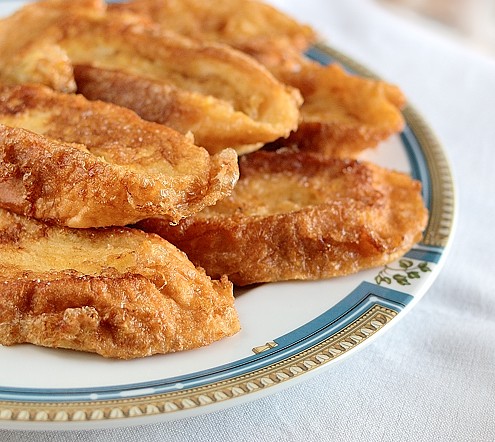
Tips for superb torrijas: I find the result is best when you let the bread go very stale before soaking, so that the slices can soak as much milk as possible and yield a very creamy inside afterwards. So what I do sometimes is to slice the bread before letting it dry overnight, to assure that the loaf dries thoroughly (and because slicing is a lot easier while the bread is soft). And I recommend you make sure that the slices soak as much milk as feasible, so it is best to check how they are doing within say 20 minutes after pouring the warm milk on them, because you can always add a little more if the slices have soaked up all the liquid in the dish, say another cup. For me these are indeed the secrets for a lusciuosly creamy interior that looks and tastes more like pastry cream than like plain milk-soaked bread. Because that is what I really love about torrijas, that the alchemy of soaking and frying metamorphoses the simplest ingredients into something different and truly delicious.
Try another great Spanish recipe – Padron Peppers – here.






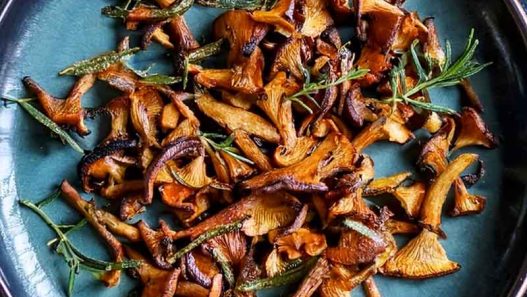

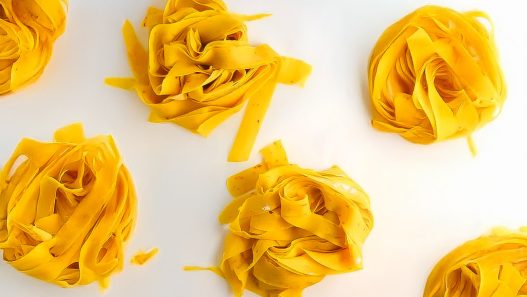
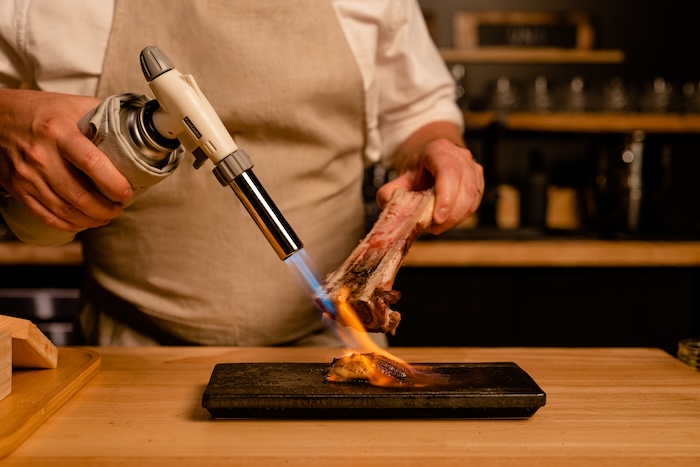


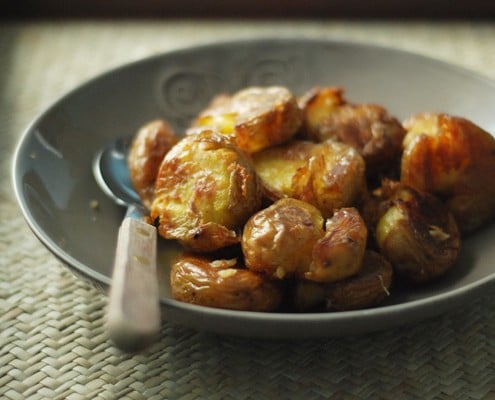

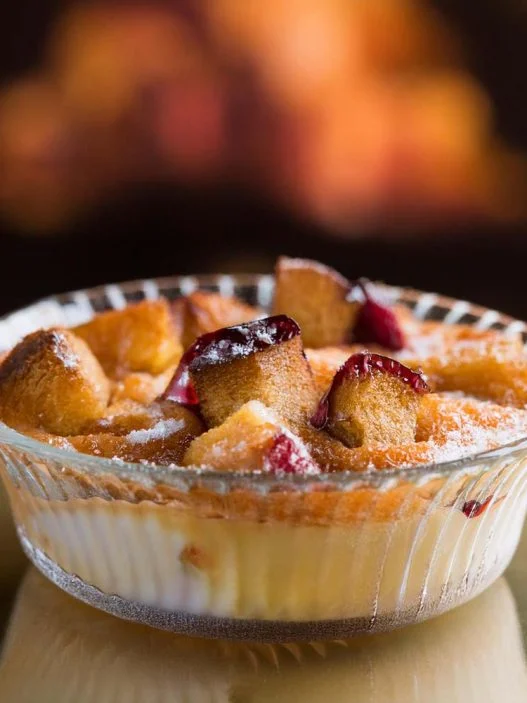

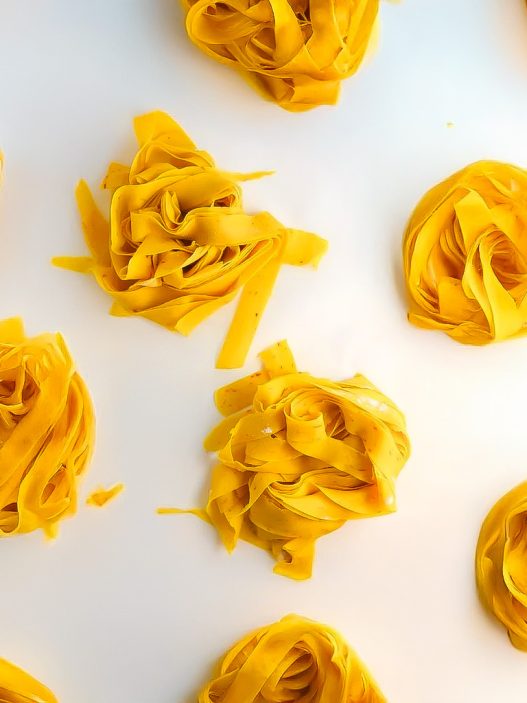


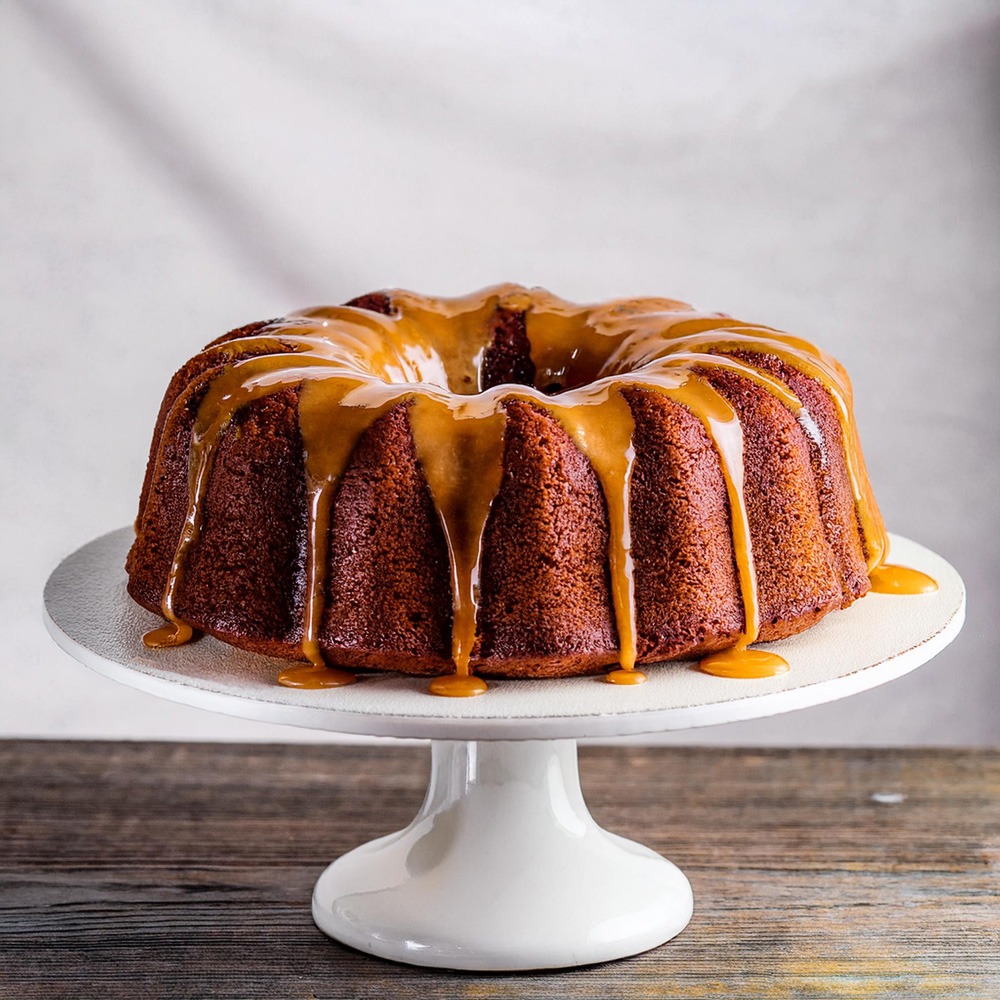



I love reading about other countries traditions, lovely post
This would be a wonderful way to start the day Miriam.
Torrijas may be a traditional Easter dish but I could eat these any time of the year. I love learning about dishes and their history.
When I lived and worked in Salamanca I stopped in a local bar every morning for my cafe con leche. I ordered this almost every morning to accompany my cafe con leche. Yum!
My Mom is from Spain and she used to make this for us for Easter, along with chocolate.
For years I just thought that she made them the same way one would prepare french toast (I never watched her prepare torrijas) but recently I started doing the cooking and my mother informed me how I was doing it wrong when I mixed the egg and milk together. I’m so happy to have found this recipe because she always says the torrijas don’t taste right and now I can just make them following this detailed recipe, and surprise her. Hopefully they’ll finally taste as good as she used to make them.
Serena, I really loved this piece of your life you just shared. I’m sure your mom will love your torrijas, the secret is in soaking them perfectly in the milk till they’re almost falling apart ;)
I lived in Spain for 18 months in my early 20’s and I remember these yummy treats for Easter. I am going to make them this year for my family. Thank you for sharing.
Thank you so much for sharing! I have been looking for a recipe for torrijas for a while and am so glad to have found this! I lived in several cities in Spain (Alconendas, Madrid, Toledo…) and have such fond memories from my time there. I am going to make torrijas for my family for Easter! They love all of the food I make them that I learned to make while in Spain and I know they will love these! Thanks again!
Sorry for any typos…I’m using my phone! I meant Alcobendas :)
These look delicious! I have been invited for Easter by Greeks and she asked me to bring a Spanish dish favored for Easter… These are perfect and I am quite anxious to try them. Thank you~
These sound very different from the “French toast” that I grew up with. We in The south have trouble with our breads being very soft from the soft glutens in our flours. To achieve the texture you describe, should we use European style breads instead of our soft breads? These sound yummy!!! Thanks!
Beautiful recipe! And one of the only ones for torrijas I have seen on the internet. My mother is from Sevilla and her recipe does not include milk, but rather the bread is soaked in sweet wine, then fried, then totally doused in honey. Oh my God delicious!
Happy Easter to you~
Está muy bien
Que buena receta. Claro que las que hacía mi madreo abuela son las que me gustan. Que nostalgia!!! Gracias Miriam. Este fin de semana las hago. Saludos desde Florida!!! Viví en Villaviciosa por 10 años!!!
pretty lit
Thank you for this amazing recipe!
it is a great recipe especially for a Spanish project
I’ve actually used your recipes for five or so years now. My family love it and anyone I’ve made them for do too. I lost the recipe and was so pleased to search and find it still available. Thanks so much for sharing it. And I completely agree; slicing the bread the night before really does help the flavour when you pour the warm milk over. I’ve always used honey to sweeten mine. I’ve even used seeetner instead of sugar and while not as good it’s still a lovely desert